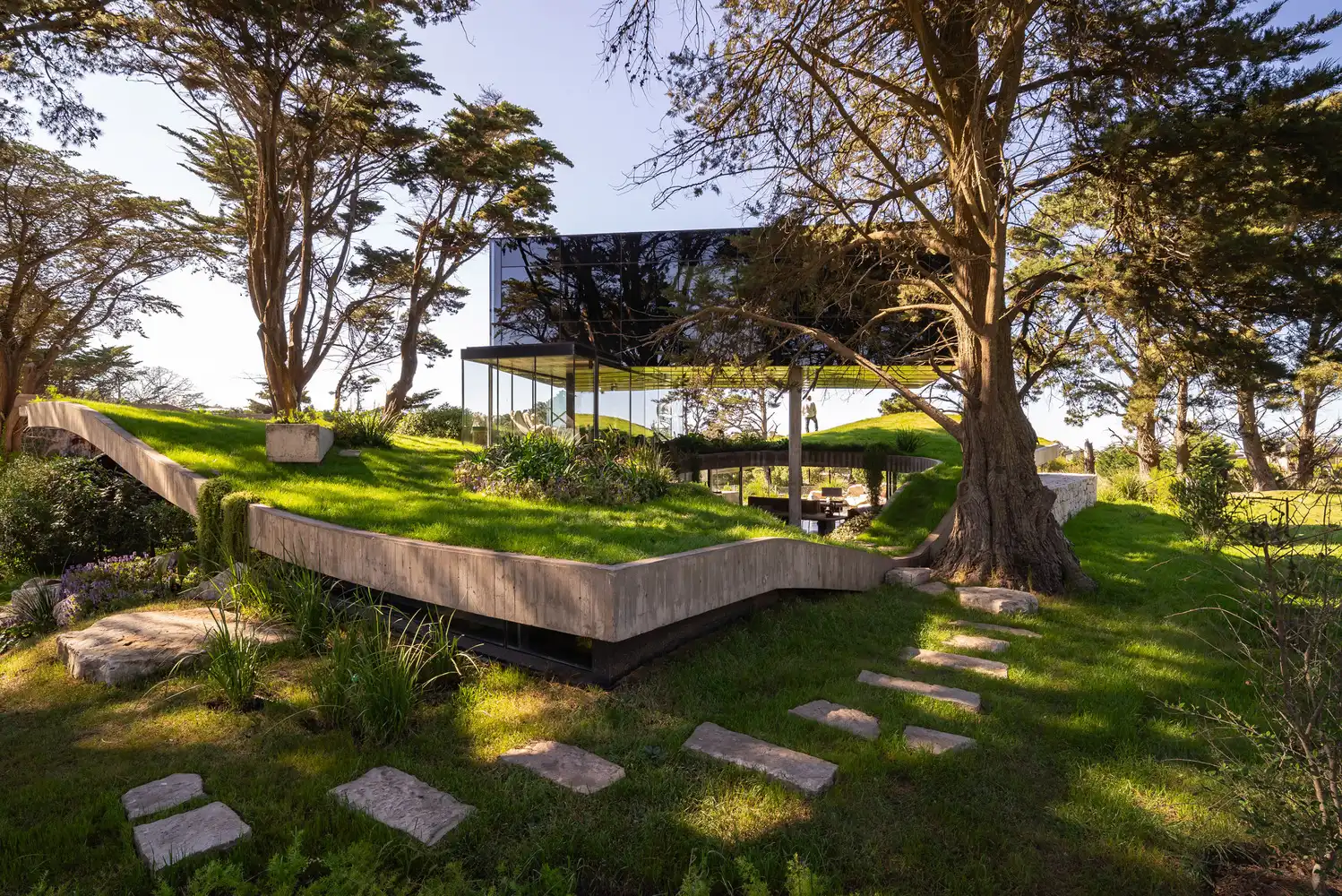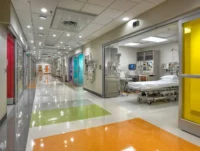Re-folded House emerges not only as an architectural statement but also as a story of generational shift and spatial reinvention. Situated within the floodplain delta of the Fraser River—North America’s longest undammed river—the project began as a conventional residential construction before an unusual mid-course transformation. The client, stepping into the project management role from her parents, approached Mcleod Bovell Modern Houses with a bold request: to re-conceptualize the house mid-construction, bringing fresh eyes, generational perspectives, and a curiosity to challenge residential norms.

Redefining Domesticity: A New Spatial Language
The design intervention prompted by the client went beyond cosmetic alteration—it initiated a reframing of programmatic assumptions commonly found in residential architecture. Inspired by cinematic sequencing and fluid spatial logic, the architects responded by creating folded planes, hovering floor plates, and angled prosceniums that choreograph movement through the house in a non-linear, visually evocative manner.
Instead of rooms being bound by walls, doors, and corridors, spatial boundaries are dissolved into irregular thresholds where light, movement, and perspective unfold unpredictably. Walls and ceilings fold, floors float, and every angle becomes an invitation to view the next space as a scene — glimpsed, anticipated, and revealed. This strategy resists singular readings of each area: spaces are multifunctional, ambiguous, and intentionally suggestive.
Furniture is kept minimal and sculptural, intentionally placed to imply rather than dictate occupation. In this way, Re-folded House operates not as a static object, but as a spatial experience in motion, continually reinterpreted by its inhabitants.

Site and Material Intelligence
The site—characterized by its vulnerability to flooding and its location on a sediment-rich wetland—is not treated as a problem to be solved, but a condition to be embraced. The project’s material palette and construction methods respond to this dynamic environment with precision and poetry.
The primary material is Accoya, a sustainably modified pine wood originally engineered in the Netherlands for contact with groundwater. The acetylation process leaves distinctive “sticker” marks from its industrial curing — visual reminders of the wood’s enhanced durability. These marks were preserved, not hidden, as part of the house’s visual identity. Left untreated, the Accoya naturally weathers into soft greys that resonate with the site’s existing hemlock trees.
The lowest level of the house was engineered specifically for periodic submersion. Typical residential elements like drywall and batt insulation are omitted, replaced by flood-resilient finishes, and essential systems are enclosed within a waterproof mechanical bunker. In essence, the house accepts the landscape’s conditions, rather than resisting them—an architecture of adaptation.

Folding Landscape: Integration, Not Imitation
The landscape design furthers the project’s conceptual rigor through a layered reading of the site. Inspired by the stratigraphy of wetlands, the landscape unfolds in three interconnected layers:
-
Layer One – Sedimentation: Expressed through the integration of functional hardscape elements—driveway, stairs, and on-grade surfaces—that visually reference the slow deposits of river sediment.
-
Layer Two – Vegetative Carpet: A composition of native and adaptive wetland plants, including sedges, deciduous shrubs, and conifers, that create a flowing, living interface between floodplain and higher banks.
-
Layer Three – Floating Infrastructure: Elevated elements such as walkways, benches, and boardwalks hover above the planted surface, allowing interaction without disturbing the ecological narrative.
This ecological layering is not merely aesthetic—it mirrors the folded logic of the architecture, reinforcing a dialogue between natural formation and designed object.

A House as Reflection and Rewriting
At its core, Re-folded House is a meditation on the interdependence between architecture and landscape, memory and reinvention, tradition and experimentation. It resists the notion of the home as fixed or singular. Instead, it reflects a deeply personal, place-specific response to the Fraser River delta’s unique conditions—its light, water, terrain, and history.
Every fold in the walls, every material left to weather, every space left undefined—all participate in a larger architectural narrative about flexibility, openness, and resilience. The result is a home that feels both ancient and new, deliberate yet improvised—a reflection of the land, the client’s vision, and a new generation’s way of dwelling in the world.
Photography: Ema Peter
- Architectural dialogue with nature
- Artist family home Malaysia
- Artist retreat architecture
- Brutalist tropical house
- Choo Gim Wah Architect
- Concrete aging with nature
- Concrete and nature integration
- Indoor-outdoor living Malaysia
- Monolithic concrete residence
- Off-form concrete design
- Passive cooling tropical house
- Rainforest hillside home
- Rainforest house with gallery walls
- Rainforest Residence Malaysia
- Sustainable tropical architecture
- Tropical concrete architecture
- Tropical hillside architecture
- Tropical modern brutalism
- Tropical rainforest home design
- Windowless concrete façade



































Leave a comment